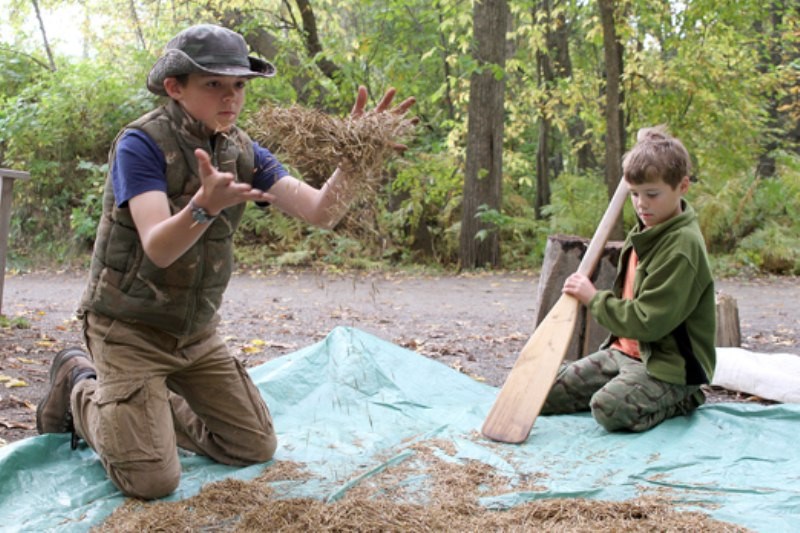Hailey Grant and her classmates took a trip into Canada’s not-so-distant past on Tuesday, learning how First Nations people and settlers lived off the land.
It’s something all students should learn, the 11-year-old Grade 6 student at Woodcrest Public School said.
“It’s important so we know why we have things now, like teas, and how they’ve evolved and how they’re different,” she said, having completed stops at several stations set up at Fort William Historical Park, part of the annual Fall Harvest tour.
Not surprisingly, the preparation of wild tea and different medicines were her favourite stops.
“We got to try the tea and he showed us which berries and different herbs are in there,” Hailey said.
Caitlin Nodin, who attends Superior Collegiate Vocational Institute, said seeing her own culture brought to life is a great way to connect with the past.
A First Nations student, Caitlin said it’s hard to imagine how people lived in pioneer times, but Tuesday’s demonstration provided plenty of insight.
“We got to watch them make moccasins and I never knew how to make moccasins before, so it was really cool,” she said.
“I think it’s important to see so our culture can keep going, so it doesn’t get lost,” she said. “I think it’s really cool because other people get to learn it too.”
Abbe Charbonneau, who teaches Grade 6 at Woodcrest, said the Fall Harvest couldn’t come at a better time.
Charbonneau said it melds in perfectly with the First People’s curriculum currently being taught at school, and seeing is always a better way to learn, he said.
“It gives them an interactive way to look at all the information, rather than just reading a textbook all the time. They get to actually live all the information that we’re showing them and stuff like that,” Charbonneau said.
“It’s amazing for it to all happen in one day. They get to see all the things we’re telling them about. Most students nowadays like to experience it hands on. And they get to see the knowledge coming directly from someone who’s done it or was passed down the traditions.”
The three day event, which began on Tuesday, saw 17 different stations set up throughout the provincial park, with demonstrations on everything from smokehouse techniques and bannock frying to treating animal pelts and building canoes.
The program is put on by the Community Coalition Unified for the Protection of our Children and Youth, and brought together elementary and secondary students from both the public and Catholic school boards.
Debbie Sault, a volunteer with CCUPCY, said the original idea a decade ago was crime prevention, but the Fall Harvest has expanded to so much more over the years.
“It teaches about the fall harvest and practices from the Ojibway people of this area, and all the work that was involved in preparing for the winter,” she said. “Obviously since it’s fall this is a perfect time to teach it.”
Like Caitlin, Sault said the program helps keep First Nations culture alive.
“It’s a cross-cultural experience too. Non-native people get to learn the practice of the Native people and I think the children are the best avenue to teach this, so they grow up learning that.”
